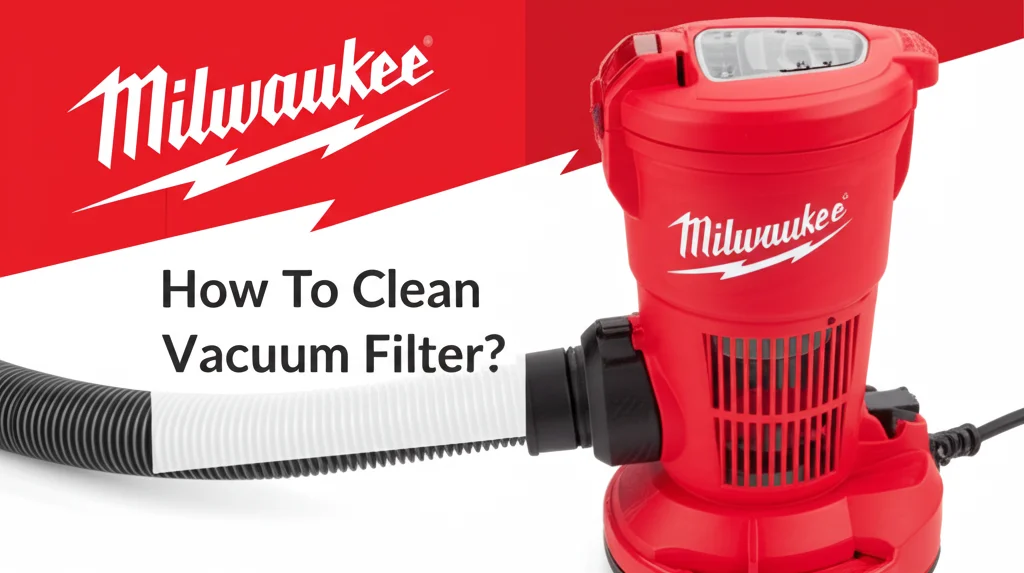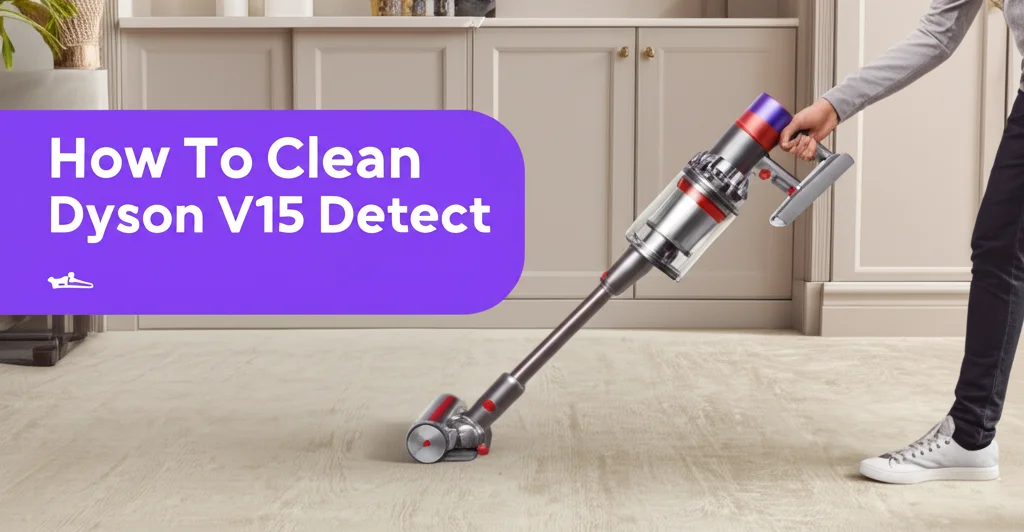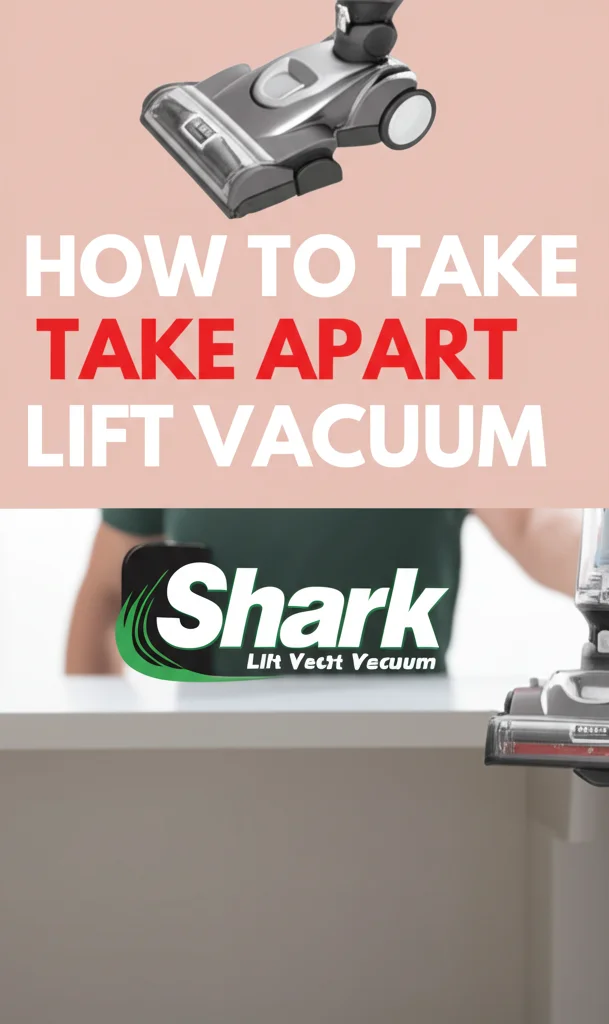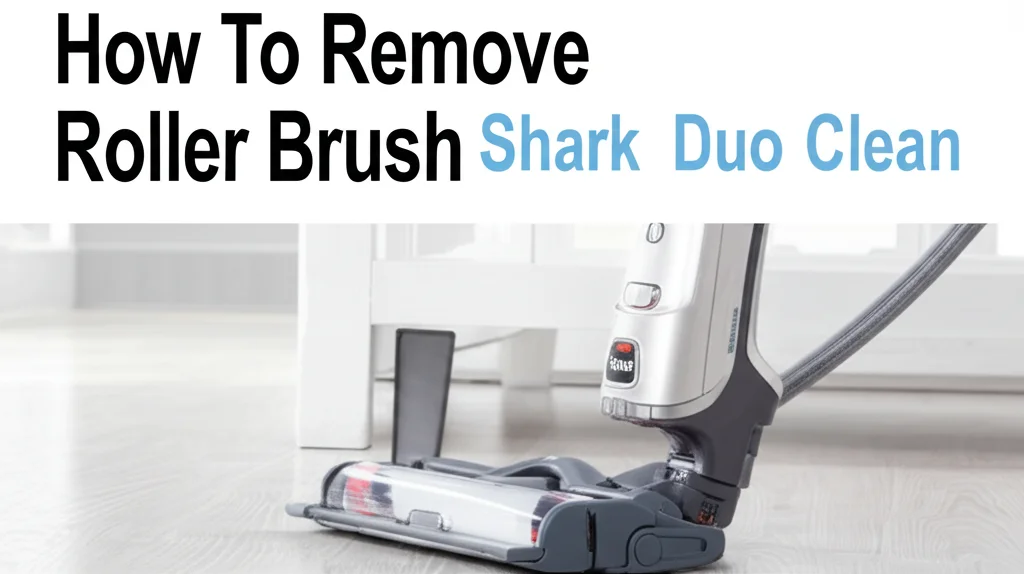· Vacuum Cleaners · 6 min read
How To Clean Milwaukee Vacuum Filter?

Keeping the Power On: How To Clean Your Milwaukee Vacuum Filter
Is your Milwaukee vacuum losing suction? A clogged filter is often the culprit. Maintaining a clean filter is crucial for optimal performance and extending the life of your Milwaukee vacuum. This article will guide you through everything you need to know about cleaning your Milwaukee vacuum filter, ensuring you get the most out of your powerful cleaning tool. We’ll cover different filter types, cleaning methods, and preventative measures to keep your vacuum running smoothly. Let’s dive in and get your Milwaukee vacuum back to its peak performance!
Takeaway:
- Regularly clean your Milwaukee vacuum filter (every 25-50 hours of use).
- Different filter types require different cleaning methods – dry dust filters, wet/dry filters, and HEPA filters.
- Proper cleaning ensures optimal suction, prevents motor damage, and extends the life of your vacuum.
Quick Answer:
To clean a Milwaukee vacuum filter, remove it from the vacuum, tap out loose debris, and wash (if applicable) with mild soap and water. Allow it to dry completely before reinstalling. For dry dust filters, a gentle tap or compressed air is often sufficient.
Understanding Your Milwaukee Vacuum Filter Types
Milwaukee vacuums utilize various filter types, each designed for specific debris and cleaning tasks. Knowing your filter type is the first step to proper cleaning. Let’s break down the common options.
Dry Dust Filters
These filters are designed for collecting dry particles like dust, sawdust, and drywall debris. They are typically made of pleated paper or fabric. Dry dust filters are not washable and rely on being tapped clean or using compressed air. Using water on these filters will damage them, reducing their effectiveness.
Wet/Dry Filters
As the name suggests, these filters can handle both wet and dry materials. They are usually made of a durable foam material. Wet/dry filters are washable, making them a convenient option for messy jobs. However, they require thorough drying before being reinstalled to prevent mold and mildew growth.
HEPA Filters
High-Efficiency Particulate Air (HEPA) filters are designed to capture extremely fine particles, including allergens and microscopic dust. These filters are often found in Milwaukee vacuums used for more sensitive cleaning tasks. HEPA filters are generally not washable and should be replaced when they become clogged. Attempting to wash a HEPA filter can compromise its filtration capabilities.
Step-by-Step: Cleaning a Dry Dust Filter
Cleaning a dry dust filter is a straightforward process. Here’s how to do it:
- Safety First: Always disconnect the vacuum from the power source before removing the filter.
- Remove the Filter: Locate the filter compartment on your Milwaukee vacuum and carefully remove the filter. Refer to your vacuum’s manual if you’re unsure of its location.
- Tap Out Debris: Gently tap the filter against a solid surface (like the inside of a trash can) to dislodge loose dust and debris.
- Use Compressed Air (Optional): For a more thorough cleaning, use compressed air to blow debris from the inside of the filter outwards. Hold the air nozzle a few inches away to avoid damaging the filter material.
- Inspect for Damage: Check the filter for any tears or holes. If damaged, replace the filter.
- Reinstall: Carefully reinstall the clean filter into the vacuum.
Cleaning a Wet/Dry Filter: A Detailed Guide
Wet/dry filters require a bit more attention, but are still easy to clean. Here’s the process:
- Remove the Filter: Disconnect the vacuum and remove the wet/dry filter.
- Rinse with Water: Rinse the filter under lukewarm water, gently squeezing to remove embedded debris. Avoid using harsh detergents or solvents.
- Wash with Mild Soap (If Needed): If the filter is particularly dirty, wash it with a mild soap and water solution. Rinse thoroughly to remove all soap residue.
- Dry Completely: This is crucial. Allow the filter to air dry completely – typically 24-48 hours – before reinstalling. A damp filter can lead to mold growth and damage the vacuum motor.
- Inspect and Reinstall: Once dry, inspect the filter for damage and reinstall it into the vacuum.
Maintaining HEPA Filters: Replacement is Key
HEPA filters are designed for single-use and aren’t meant to be washed. Washing can destroy the intricate structure of the filter, rendering it ineffective.
- Check Regularly: Inspect your HEPA filter regularly for signs of clogging (reduced airflow, decreased suction).
- Replace When Clogged: When the filter appears dirty or suction is significantly reduced, it’s time to replace it.
- Proper Disposal: Dispose of the old HEPA filter according to local regulations.
Preventing Filter Clogs: Proactive Measures
Preventing filter clogs is just as important as cleaning them. Here are some tips to keep your Milwaukee vacuum filter in top shape:
- Empty the Dust Collection Bag/Container Regularly: Don’t let the bag or container become overly full, as this puts extra strain on the filter.
- Pre-Sort Debris: If possible, separate large debris from fine dust before vacuuming.
- Use the Right Attachment: Utilize the appropriate attachments for different surfaces and debris types.
- Avoid Wet Materials with Dry Filters: Never vacuum wet materials with a dry dust filter.
- Consider a Pre-Filter: Some Milwaukee vacuums allow for the use of a pre-filter, which can capture larger particles and extend the life of the main filter. You can find more information on floor cleaning at https://www.beacleaner.com/how-to-clean-vinyl-plank-flooring/.
Troubleshooting: Common Filter-Related Issues
Even with regular cleaning, you might encounter some issues. Here are a few common problems and solutions:
- Reduced Suction: This is often a sign of a clogged filter. Clean or replace the filter as needed.
- Burning Smell: A burning smell could indicate a clogged filter restricting airflow to the motor. Immediately turn off the vacuum and clean or replace the filter.
- Moldy Smell: This suggests a wet/dry filter wasn’t dried completely before being reinstalled. Replace the filter and ensure thorough drying in the future.
- Vacuum Overheating: A clogged filter can cause the vacuum to overheat. Turn off the vacuum and allow it to cool down before cleaning or replacing the filter. If you’re dealing with a dirty floor, you might also want to check out https://www.beacleaner.com/how-to-clean-floor-grout-without-scrubbing/.
Conclusion: Maintaining Peak Performance
Cleaning your Milwaukee vacuum filter is a simple yet vital maintenance task. By understanding the different filter types, following the appropriate cleaning methods, and implementing preventative measures, you can ensure your vacuum continues to deliver powerful suction and reliable performance for years to come. Remember to always prioritize safety by disconnecting the vacuum before any maintenance. A clean filter means a happy vacuum – and a cleaner home! Don’t forget to regularly inspect and maintain other parts of your vacuum for optimal performance. If you’re looking for more cleaning tips, you might find this article helpful: https://www.beacleaner.com/how-to-remove-mold-from-painted-walls/.




